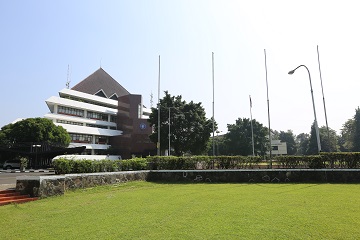A Group of Researchers of IPB: Implemented the Study on the Flood Assessment of Bengawan Solo River

Researchers from the Center for Disaster Studies (PSB) of Institute for Research and Community Service of Bogor Agricultural University (LPPM IPB) revealed the fact that over the past ten years there has been an increase in the disastrous incidence in agriculture sector in the watershed (Bengawan Solo). The study core team includes Burhanuddin, Euis Sunarti, Natasa Apriana, Nurul Arifiyanti, Firman Rompone, and Milatul Ulfa. The watershed area studied covers upstream to downstream of Bengawan Solo river flow from Wonogiri, Ngawi and Bojonegoro.
Throughout Indonesia, it is recorded that there are 5,590 main rivers and 600 rivers have the potential to cause flooding among others. One of it is Bengawan Solo River, which is the longest river in Java. The floods that hit the area have resulted in disruption of public health, disrupted economic activity, and damaged urban infrastructure. The phenomenon of floods and their negative impacts in the area of the Bengawan Solo river banks, indicating a condition of the area and the public about the lack of understanding of the characteristics of the hazards, behaviours that lead to degradation of natural resources, and lack of early warning that causes unpreparedness and inability in the face of danger. Previous studies explained that the risk of flooding in the watershed occurred in rice plants with the loss rate from 7.39 percent to 164.57 percent. Meanwhile, the loss caused by flood disaster for farm households is around Rp 5-11 million per planting period. Meanwhile, if calculated based on the size of the land, the losses per hectare occurred to reach 8-35 million rupiah per hectare of agricultural land.
Data collection was carried for four months, April to July 2016, interviews and discussion forums were utilized to collect the primary data. Secondary data collection from various previous studies, measurement data of water level/discharge, rainfall data, flood event data, inundation data, topography data, basin maps and river cross section data., in addition the secondary data were also utilized to support the study. Data of this descriptive research were then quantitatively and qualitatively and analysed.
Burhanuddin explained the worst area affected by the flood has been the downstream area of Bengawan Solo River Basin. The condition urged farmers whose lands were submerged to go to other areas to get outside employment (as an agricultural labourer on another farm) in other villages that are not affected by the flood. On the other hand, the flood also has a positive impact as it increases soil fertility due to nutrient deposition brought by the water flow. Meanwhile, in watershed areas in Wonogiri, Ngawi and Bojonegoro, have been planted with non-rice in the dry season. Although they can alternate their farms, the impact of drought is higher than the floods in the said area. Farmers experience crop losses of their soybean, corn, tobacco, chili, or cassava that they cultivated during the dry season.
In addition to the economic analysis, the team also provided a scheme for flood management at the District Government level. Among other efforts made were preparedness, emergency disaster management, and rehabilitation of reconstruction. They were then translated into disaster prone maps and disaster management plans. There is also a formation of disaster posts in every sub-district, while funds are supported by local and central government.
In terms of the regulatory process (for example, licensing of abstraction or determination of tariffs), steps are built in to obtain agreement with concerned agencies, groups, or ad hoc committees of stakeholders before decisions are made by the concerned authorities. However, this process lacks the independence, fairness, and transparency that regulatory mechanisms should have. In river basins where there are water resource quantity and quality constraints, the operating agencies find it difficult to implement regulatory governance. Regulatory function in monitoring for the control and management of river basin for the village or kelurahan level must be implemented. In terms of supporting facilities are also telecommunication facilities must be prepared and also the establishment of disaster preparedness cadets (Tagana).
Through this research, they also provide suggestions for the socialization and application of agricultural insurance in high vulnerability areas, the utilization of early detection information of flood disaster is also needed to determine the pattern of rice field cultivation. Management of flood structurally with infrastructure development plans to reduce Bengawan Solo river flood was not entirely successful to be realized due to limited costs and social problems so that it was suggested to have non-structural flood management approach such as river basin conservation, flood early warning and flood mitigation to reduce losses due to flood disaster. (Wied)



